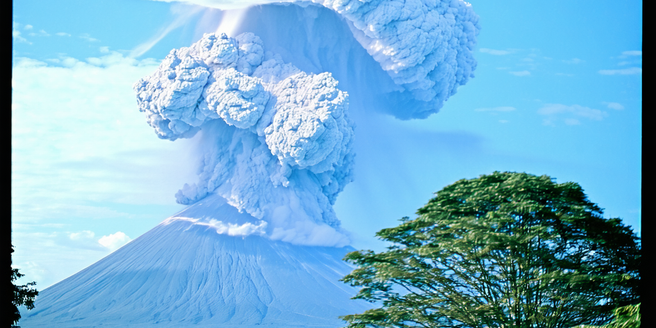
Understanding Aerosols: Types and Sources
Aerosols are tiny particles or droplets suspended in the atmosphere. They originate from both natural sources, such as volcanic eruptions, sea spray, and forest fires, and human activities, including industrial emissions and vehicle exhaust. Understanding the types and sources of aerosols is crucial for assessing their environmental and health impacts. Natural aerosols are an integral part of Earth’s systems, affecting cloud formation and weather patterns. In contrast, anthropogenic aerosols, often resulting from combustion processes, can contribute to air pollution and climate change. Primary aerosols are emitted directly into the atmosphere, while secondary aerosols form through chemical reactions. The composition, size, and concentration of aerosols determine their impact on the climate, as well as their ability to affect human health and visibility.
The Role of Aerosols in Climate Systems
Aerosols play a crucial role in climate systems by interacting with solar radiation and clouds, thereby affecting Earth’s energy balance. These interactions can lead to both cooling and warming effects. Some aerosols, like sulfate particles, reflect sunlight back into space, resulting in a cooling effect known as ‘global dimming.’ Conversely, black carbon aerosols absorb heat and can contribute to warming. Aerosols also act as cloud condensation nuclei, influencing cloud properties and precipitation patterns. By altering the amount and type of clouds, aerosols can further impact the climate. Understanding these complex interactions is essential for making accurate climate predictions. Additionally, aerosols’ interactions with atmospheric components are vital for assessing their long-term impact on global warming and climate variability.
Meteorological Phenomena Affected by Aerosols
Aerosols can significantly influence various meteorological phenomena, including precipitation, storms, and temperature distributions. They affect cloud microphysics by altering droplet size and concentration, which can impact precipitation processes. This alteration may lead to either enhanced or suppressed rainfall, depending on aerosol type and concentration. Furthermore, aerosols can modify the development and intensity of storms by affecting atmospheric stability and convection. For instance, increased aerosol levels can enhance lightning activity by affecting storm electrification. Temperature distributions can also be affected, as aerosols influence the radiative balance of the atmosphere. A higher concentration of cooling aerosols may lead to temperature inversions, while absorbing aerosols can increase surface and atmospheric temperatures, thereby affecting local and global weather patterns.
Aerosols and Their Influence on Weather Patterns
Aerosols have profound influences on weather patterns due to their ability to alter atmospheric conditions. By acting as cloud condensation and ice nuclei, they affect cloud formation and longevity, leading to changes in precipitation patterns. The presence of aerosols can inhibit rainfall by delaying the coalescence of water droplets, which can cause drought conditions in some regions. Conversely, aerosols can also enhance rainfall in specific areas by promoting cloud deepening and increased rainfall intensity. Additionally, absorbing aerosols like black carbon can heat the atmosphere, stabilizing it and potentially suppressing storm development. Understanding these interactions is essential for accurate weather forecasting and for developing strategies to mitigate adverse weather impacts influenced by aerosols.
Human Activities and Aerosol Emissions
Human activities are significant contributors to aerosol emissions, which affect both air quality and the climate. Industrial processes, vehicle emissions, and biomass burning release various aerosols into the atmosphere. The burning of fossil fuels is a major source of particulate matter, including black carbon and organic compounds. Agriculture also contributes to aerosol formation through the use of fertilizers that produce ammonia, leading to ammonium sulfate aerosol formation. Urbanization and industrialization have led to increased aerosol concentrations, which can enhance health risks due to air pollution. Policies aimed at reducing emissions from these activities focus on transitioning to cleaner energy sources and improving emission controls. Understanding the contribution of human activities to aerosol levels is critical for mitigating their environmental and health impacts.
Strategies for Mitigating Aerosol Impact
Mitigating the negative impacts of aerosols on the environment and health requires integrated strategies at local, national, and global levels. Firstly, reducing emissions from key sources such as transportation, industry, and agriculture is essential. Implementing cleaner technologies and improving fuel efficiency can significantly curb aerosol emissions. Policies that promote the use of renewable energy sources can also help decrease reliance on fossil fuels, thus reducing aerosol discharges. On a local scale, urban planning that reduces vehicular traffic and encourages public transport use can lead to decreased urban aerosol concentrations. Additionally, international cooperation is crucial for addressing transboundary air pollution. Public awareness and education on the sources and effects of aerosols can also foster community support for regulations and policies aimed at reducing aerosol impact.
